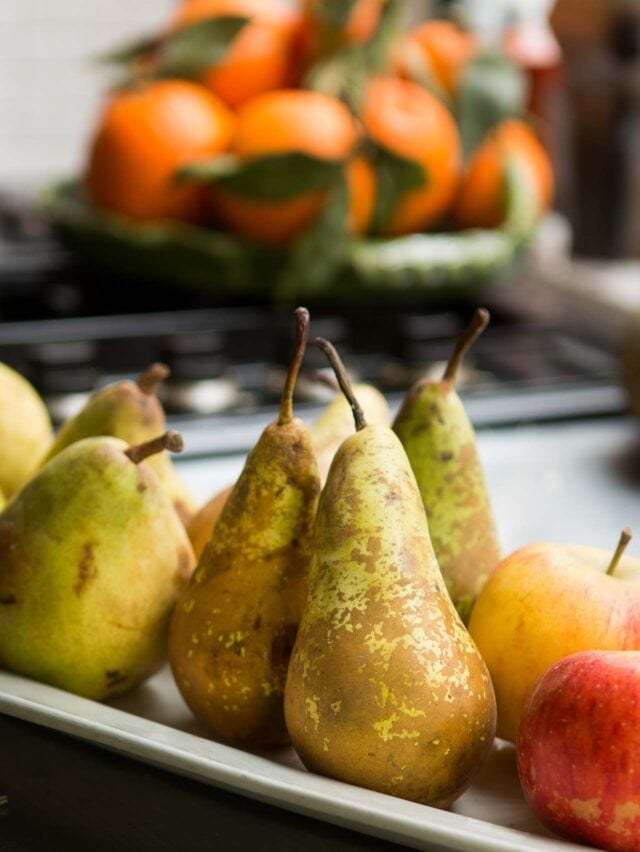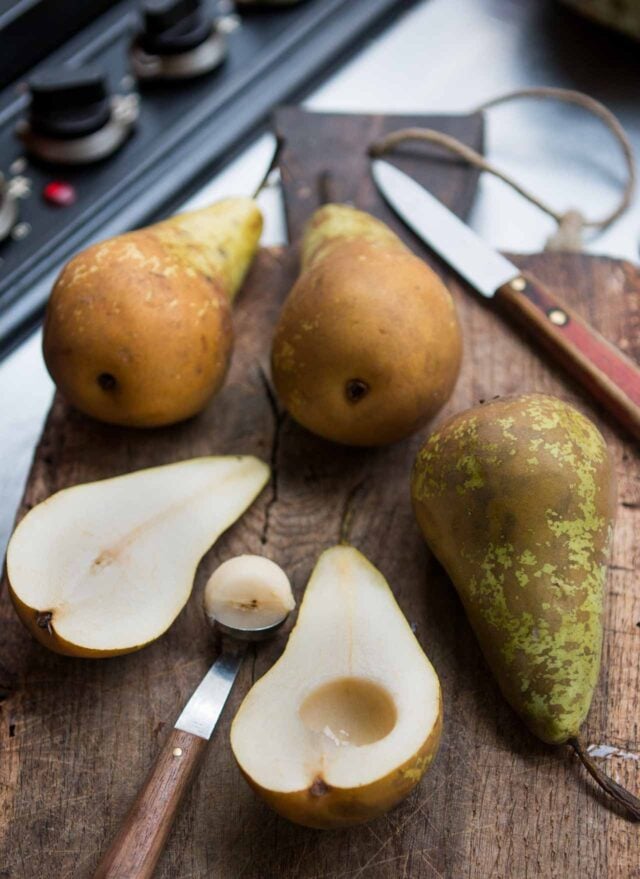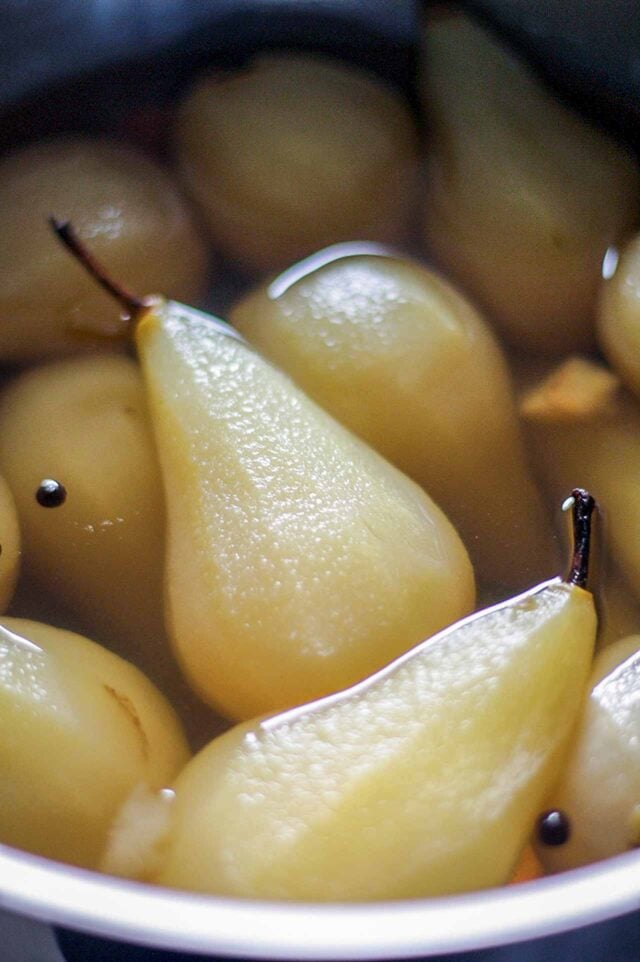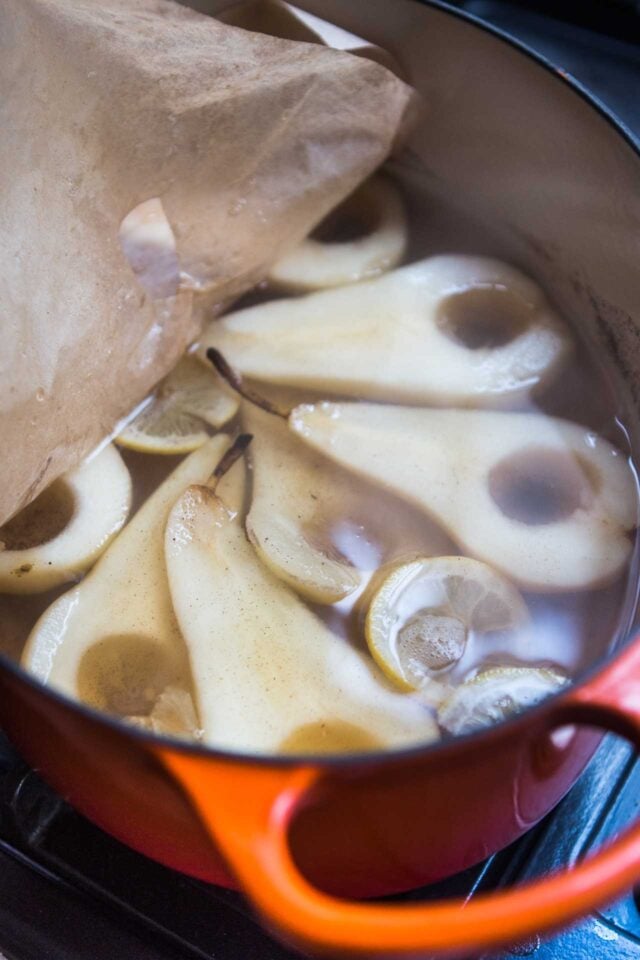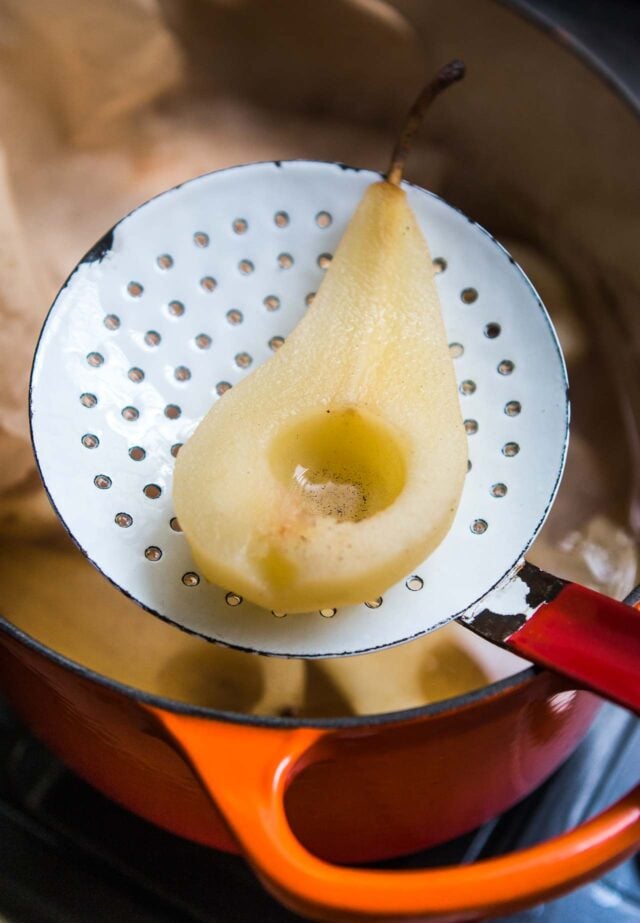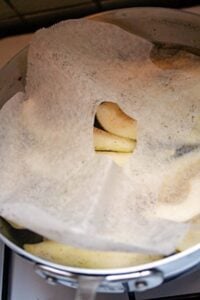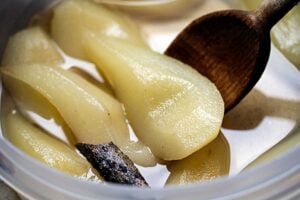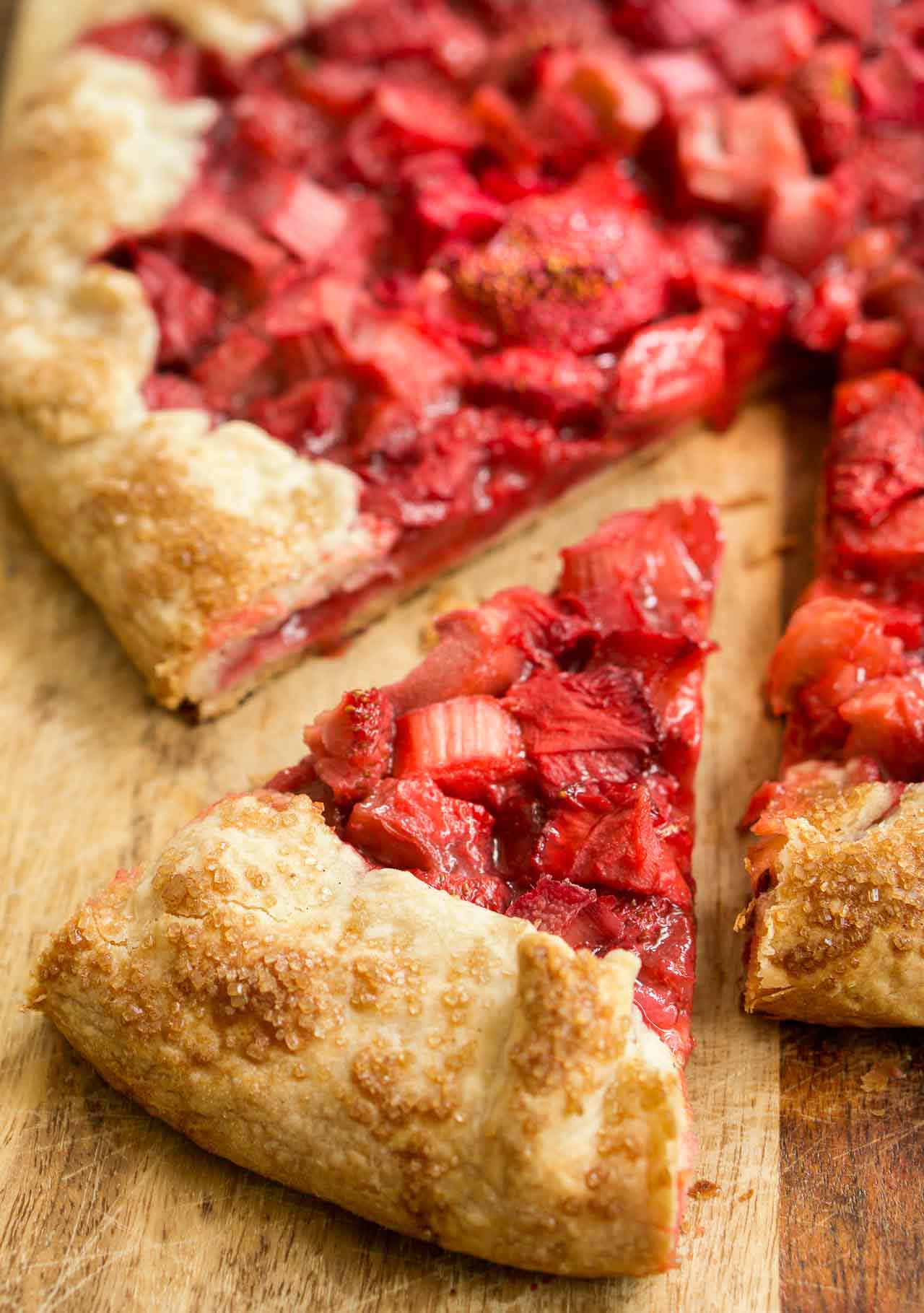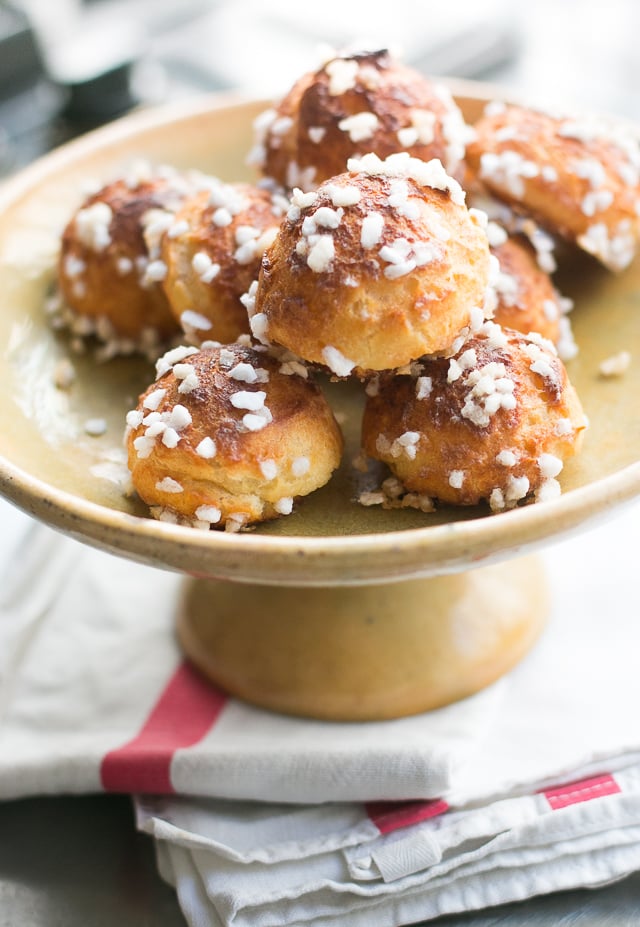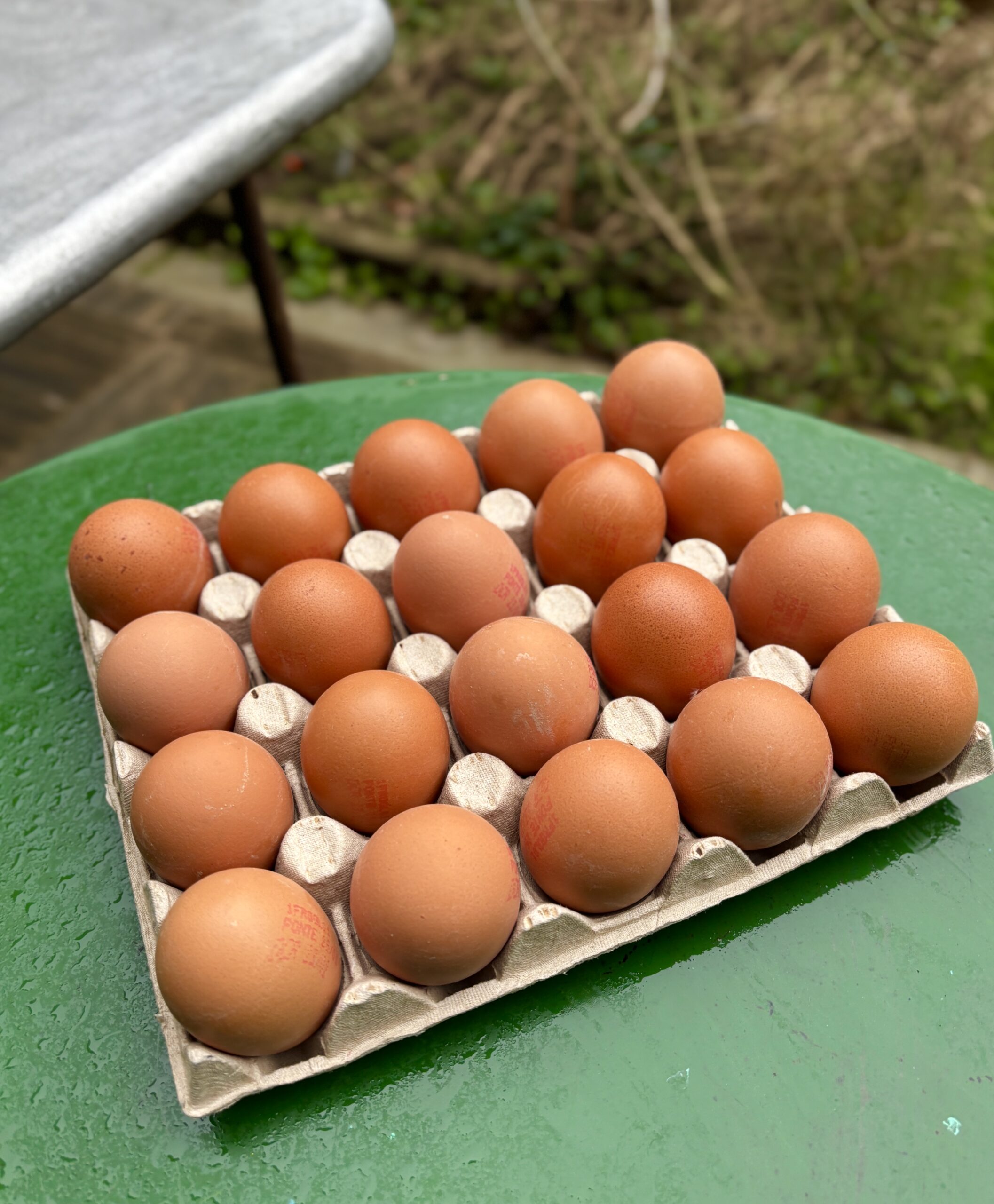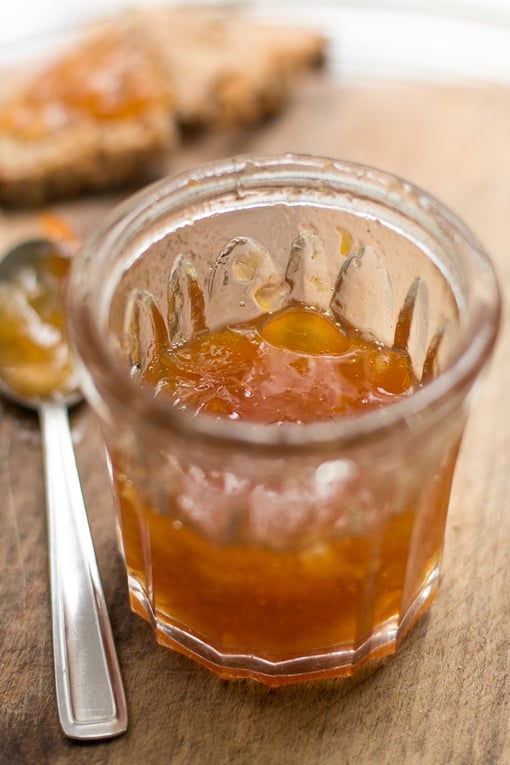How to Poach Pears
Every year I spend an inordinate amount of my time poaching fruit. It’s usually because I’m powerless to resist all the pears in baskets at my market, and buy far more than I need. Yes, much of my sweet bounty finds its way into sorbets, cakes, ice creams, and jams. But one of my favorite ways to keep those pears around a little longer is to poach them.
Poaching is gentle, stove-top cooking, and winter pears are ideal candidates since they keep their shape. Poaching also improves the taste of ho-hum pears. That’s especially good news for you do-ahead folks out there; the longer the pears sit in the flavorful syrup after poaching, the better they’ll taste. Since there isn’t a big variety of fruit tumbling my way in the winter, to get my fruit fix, I’ll keep some poached pears in the refrigerator and enjoy them diced and mixed with my mid-morning yogurt and granola.
Be sure to start with firm, ripe pears.
My choice are Bosc pears, similar to Conference pears, which I use in France. Tiny Seckel pears, if you can get them, are lovely poached whole or in halves, with the cores scooped out. And bulbous Winter Nellis work very well, too, as will Anjou pears, although I find their flavor somewhat muted. Softer pears like Comice or Bartlett, while tasty, will fall apart during poaching, so they’ll have to go stand in the corner.
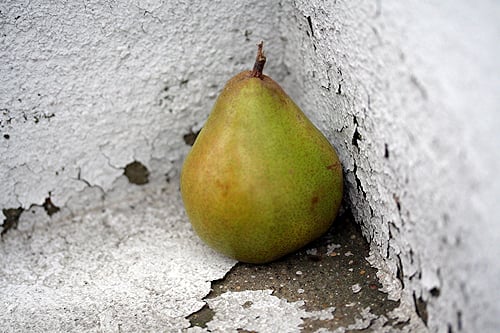
You can customize the poaching liquid to suit your taste, adding various spices, slices of fresh ginger, vanilla beans, or wine to the mix. And I also change sweeteners, swapping out honey for sugar. Just be sure to keep it relatively simple. It’s nice to make things lively, but too many flavors can spoil the broth. Once the pears are poached, I’ll often add a handful of dried fruits, such as sour cherries, cranberries, raisins, or currant to the still-hot liquid, and the heat will plump them up nicely.
Poaching pears couldn’t be easier, but during cooking, the one thing you want to watch out for is the pears either poking out of the water or not cooking them enough. Either will cause the pears to discolor. You want to make sure they cook evenly, and to remain submerged in liquid. To prevent this, I craft a circle of parchment paper to fit over the top of the pears while they’re cooking with a vent hole in the middle to let the steam escape.
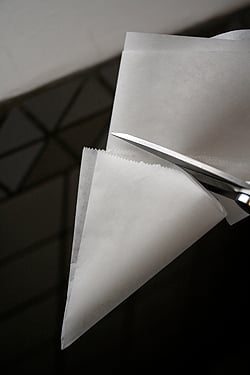
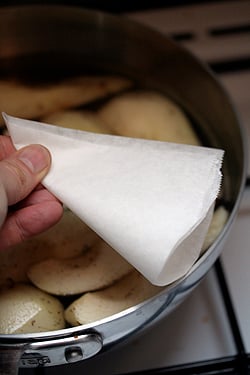
Simply take a large circle or square of parchment paper and fold it into a triangle. Hold the point hovering over the center of the pan you’re using, then use your scissors to trim away the excess paper, so it’ll fit snugly over the fruit. Then cut a hole in the center, which will allow some of the steam to escape and help the liquid reduce a bit. Drape the paper over the pears while they’re cooking, pressing down every so often while they simmer, to make sure the liquid or vapor is covering them.
If you’d like, after poaching the pears, you can reduce the liquid until it becomes a thick syrup and pour it over the pears before serving. To do that, remove the pears with a slotted spoon and strain out any spices or seasonings, then cook the liquid over medium-high heat until it’s reduced by about half. If I’m serving the pears by themselves, or alongside a cake, I’ll do that to make a richer, thicker, more flavorful sauce.
Poached Pears
- 1 quart (1l) water, 1l
- 1 cup (200g) sugar
- 2 tablespoons honey, (optional)
- 4 Bosc pears (or another firm variety), peeled, cored, and quartered
- 1 cinnamon stick, 2 teaspoons whole or lightly crushed cloves or allspice berries, a few slices of fresh lemon, one vanilla bean split lengthwise, 2-3 star anise, 6-8 slices fresh ginger slices, (suggested additions)
- In a large saucepan, heat the water, sugar, and honey (if using) until warm and the sugar is dissolved. Add any of the suggested additions that you wish.
- Slide in the pears and cover with a round of parchment paper with a small vent hole cut in the center.
- Keep the liquid at a very low boil and simmer the pears until cooked through, 10 to 25 minutes, depending on the pears. While they are poaching, every so often gently push down the pears to make sure they are submerged in poaching liquid. (The round of paper helps to keep the pears moist and wet.)
- When translucent and a paring knife inserted into the pears meets no resistance, remove from heat and let the pears cool in their liquid.
- If you wish, you can also remove the pears with a slotted spoon and reduce the liquid by about half, and pour that over the pears, which will make a richer sauce.
Notes
Related Recipes & Links
Pear Ice Cream with Wine-Poached Pears (Use Real Butter)
Pear Butter (Simply Recipes)
Pain d’epices: French spice bread
Pear Varieties (California Pear Advisory Board)
